Coronella austriaca
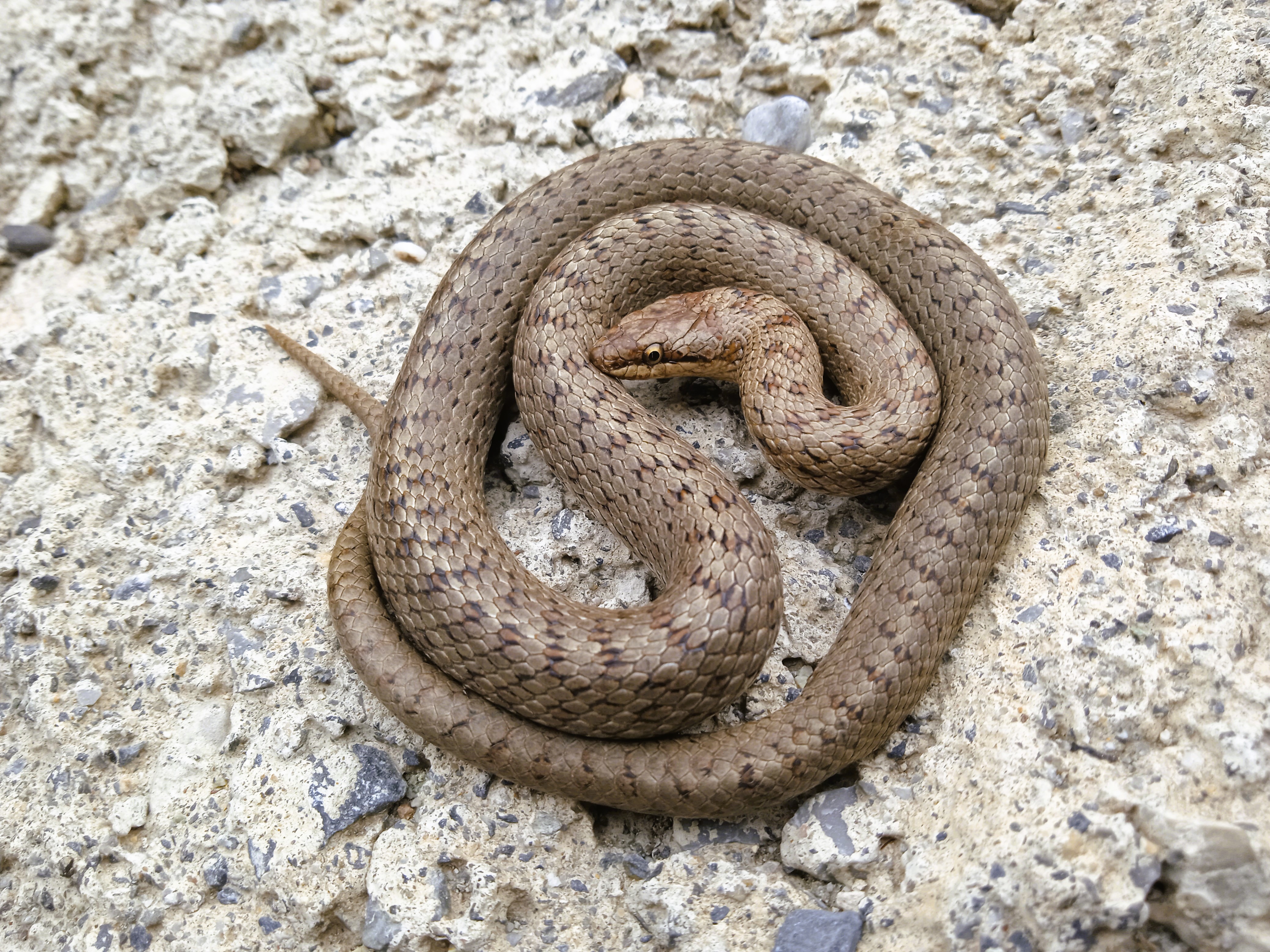

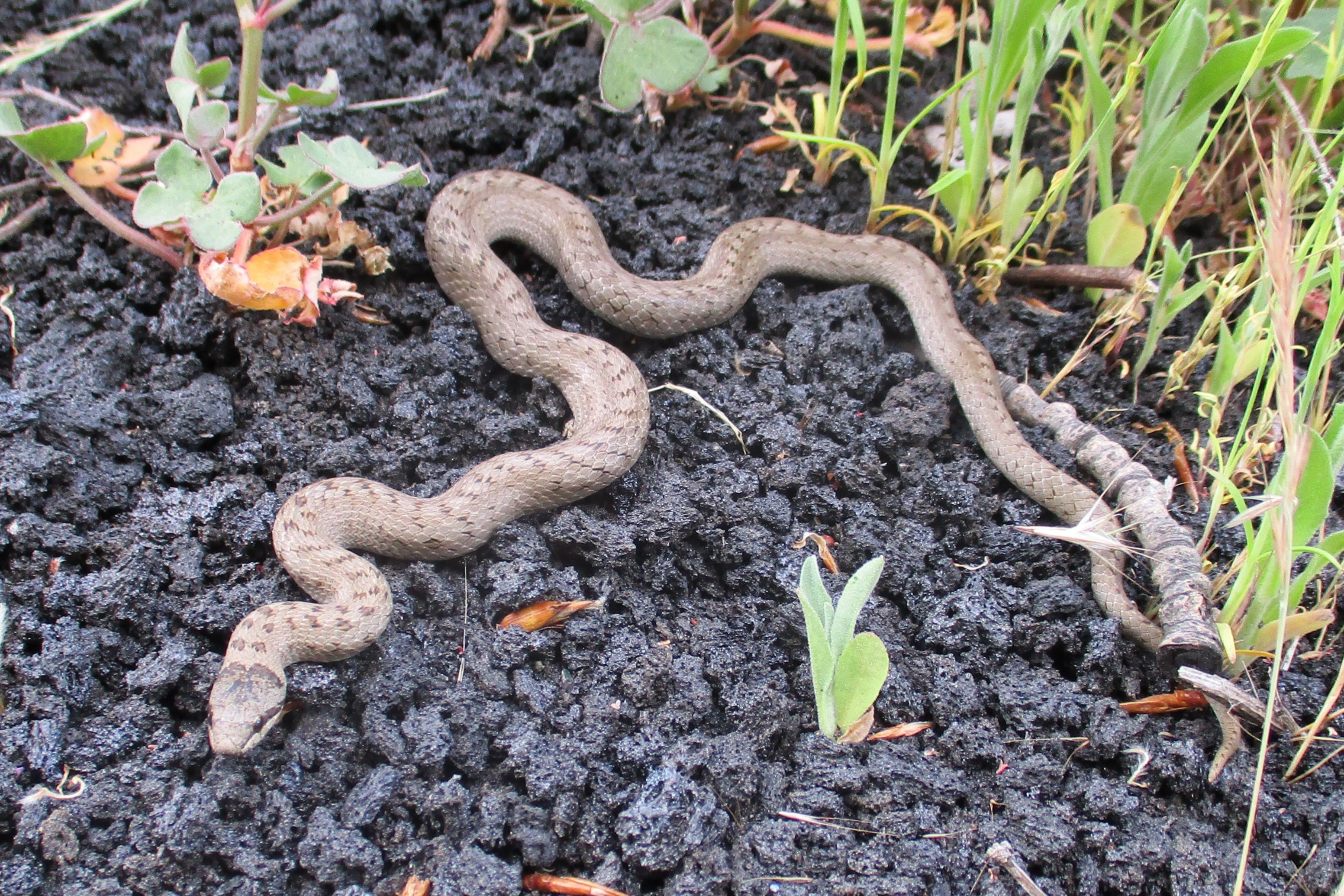


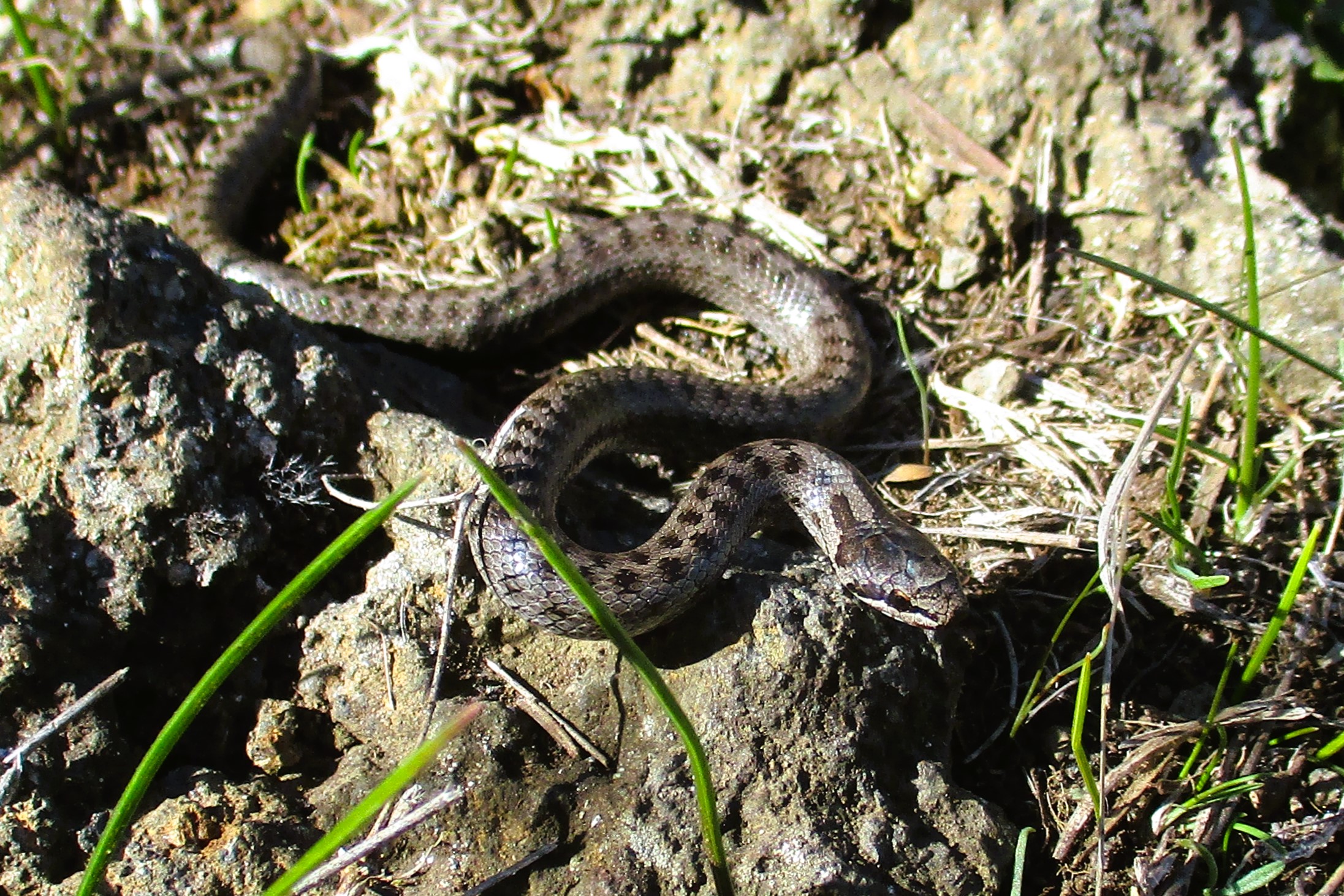
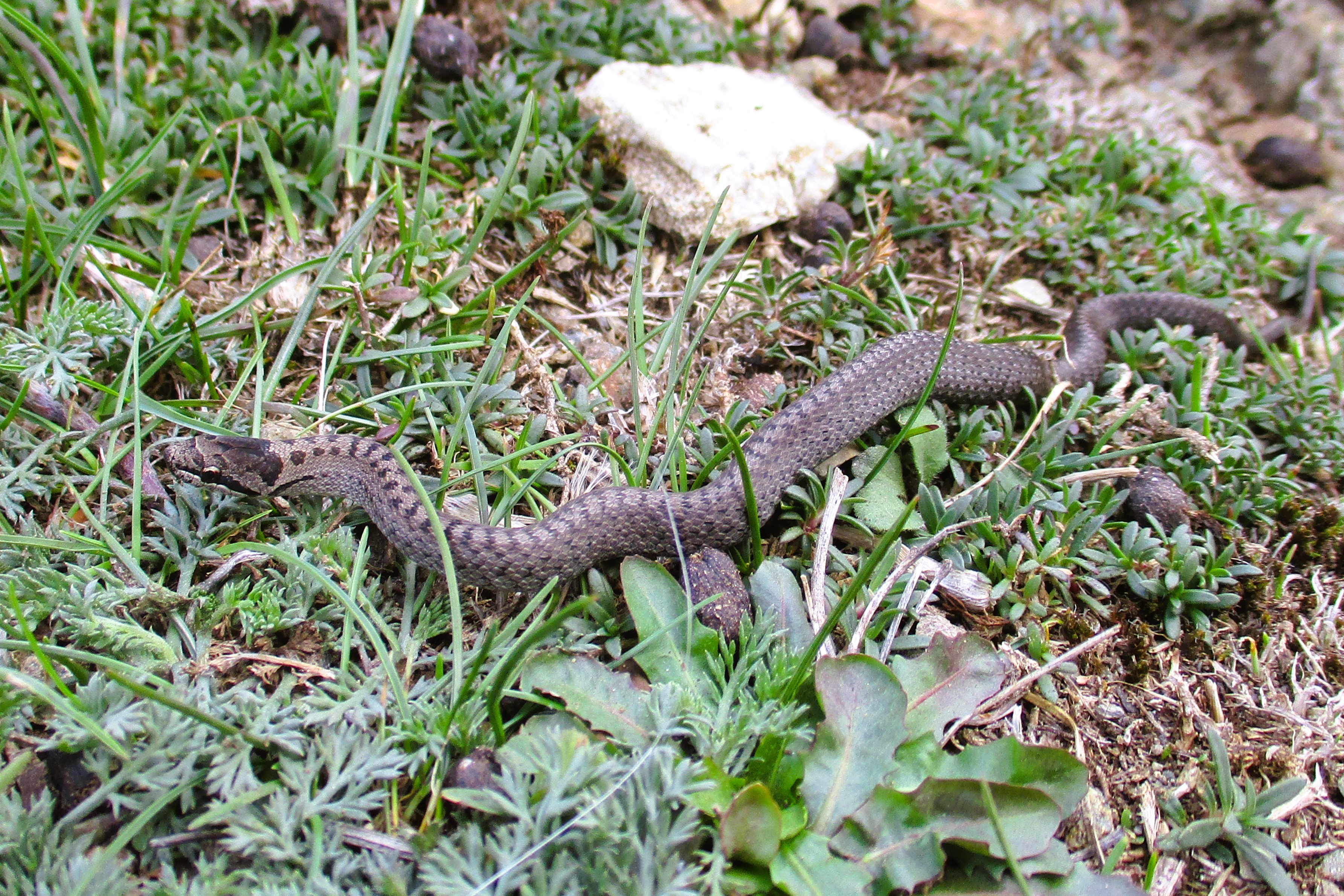
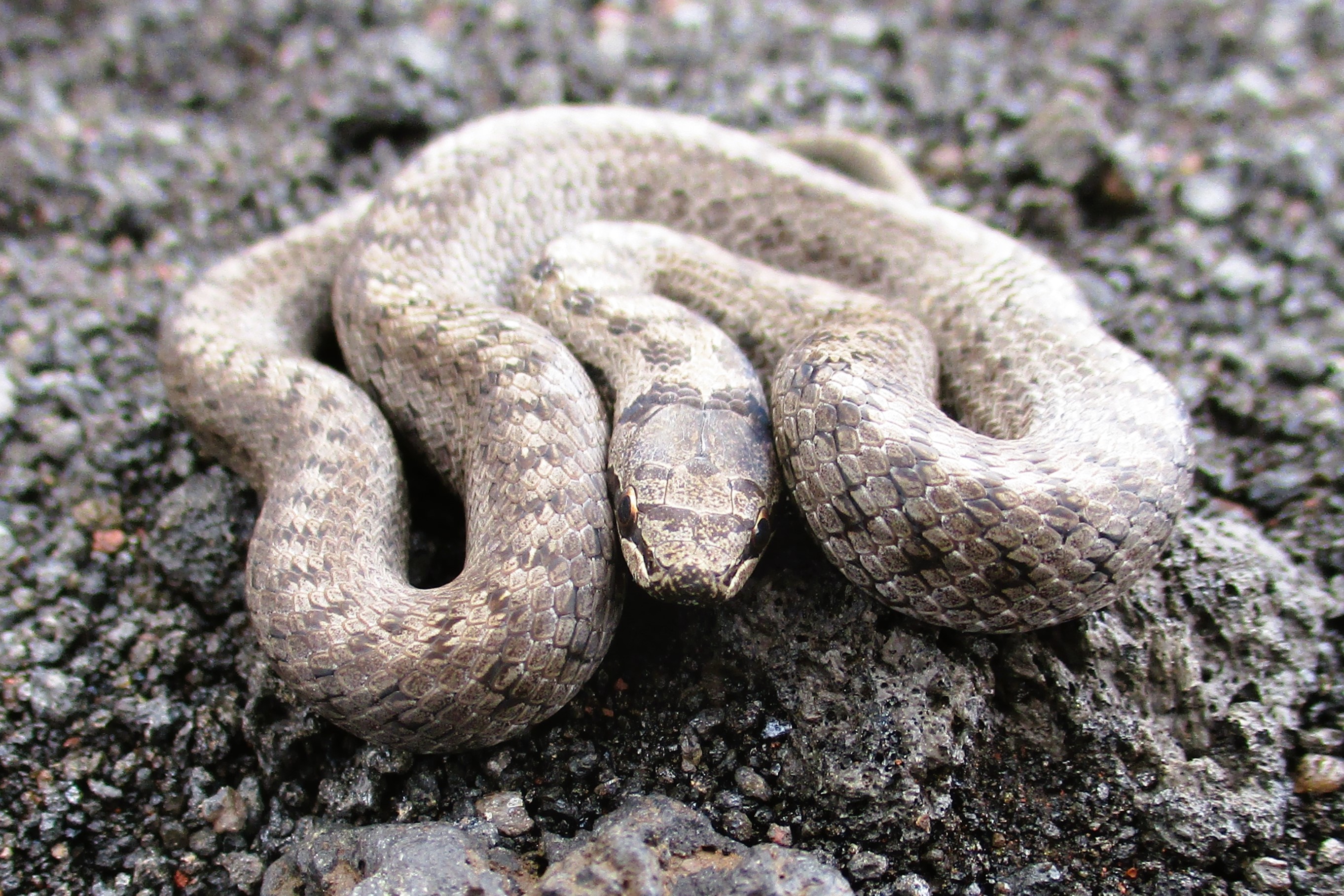

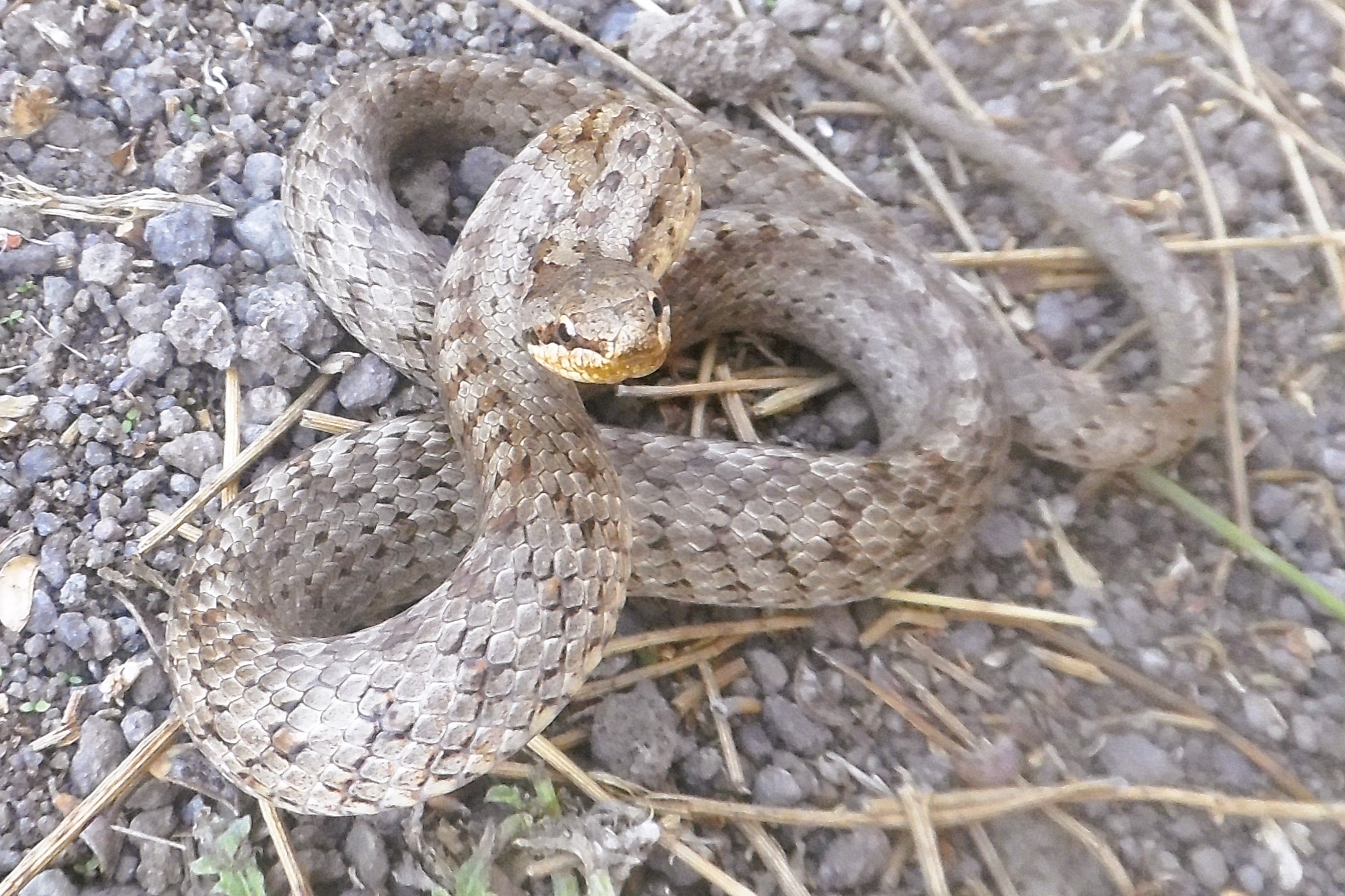
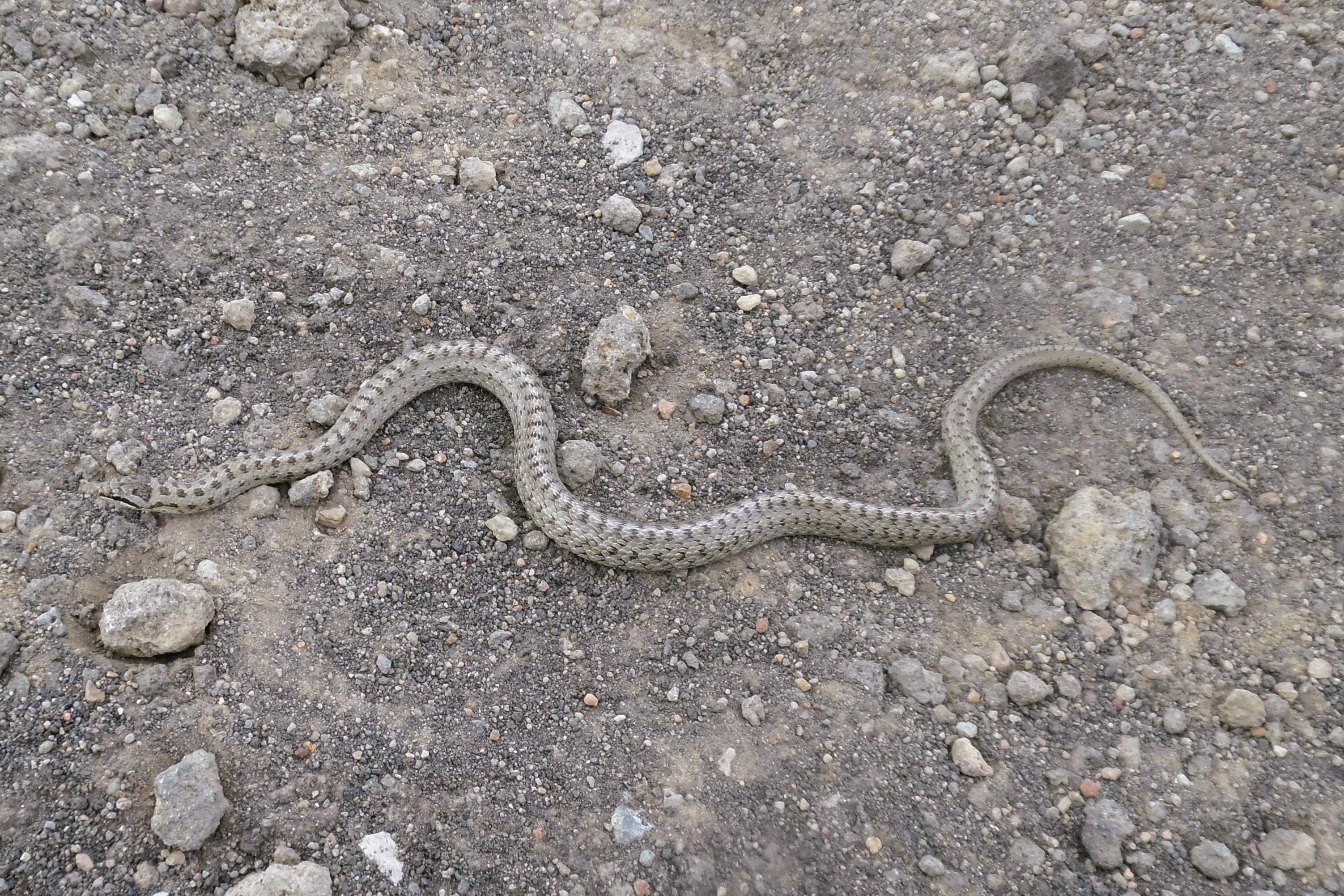
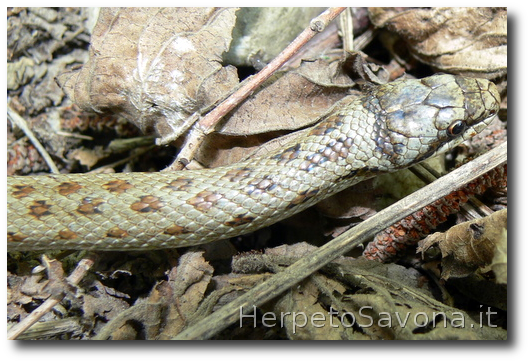
Reptilia → Squamata → Colubridae → Coronella → Coronella austriaca
Biscia, Aspisurdu
The Smooth Snake ( Coronella austriaca ) is a medium-small sized snake, rarely reaching a total length of 28–30 in (70–75 cm). The body is slender, with especially smooth and shiny dorsal scales that create a silky sensation to the touch and sight, which clearly distinguishes it from other similar species. Coloration varies from gray to reddish-brown, decorated with a series of dark spots, which may be regularly arranged or more blurred.
A distinctive feature is the dark band that starts at the nostril, crosses the eye, and extends to the corner of the mouth, giving this cautious animal an alert and penetrating look. The eye is small, with a round pupil and a yellowish or brownish iris. Juveniles closely resemble adults in shape, but can be recognized by their distinctly darker head compared to the body.
Sexual dimorphism is barely marked: generally, females are slightly larger than males.
The dentition is aglyphous, meaning it lacks functional venom grooves or channels in the teeth. Coronella austriaca , like other non-venomous Italian colubrids, is not dangerous to humans. However, it should be noted that there are small venom glands known as Duvernoy's glands. These glands, first described by Phisalix in 1922 and confirmed by recent studies (Di Nicola et al.), are structures located at the back of the upper jaw that produce a weak secretion harmless to humans. The role of Duvernoy's gland secretion is mainly predatory, helping to capture and immobilize small prey, but it does not serve a defensive purpose and has no relevant effect on humans.
The Smooth Snake is widely distributed throughout Central and Southern Europe, extending eastward toward the Caucasus and parts of Asia Minor. In Italy, it occupies almost all continental areas, being absent only in Sardinia.
In the province of Savona and western Liguria, sightings are relatively rare, mainly due to the species' cryptic and hard-to-observe nature. The few known observations are mostly concentrated between 260 and 3,280 ft (80 and 1 000 meters) of elevation, being more frequent above 2,300 ft (700 meters), where it finds favorable habitats less disturbed by humans.
This species favors cool, shaded continental environments, avoiding very open areas lacking shelter. It is found in a surprising variety of habitats:
The Smooth Snake is territorial and mainly diurnal, though in some circumstances it may extend its activity toward dusk. It is not particularly fast-moving but can swim quite well and climb low bushes in search of small vertebrates.
If startled, it tends to remain motionless rather than flee. For defense, it coils up, producing a hiss, and may bite if necessary. As an additional defense, it can expel a foul-smelling substance from the cloaca in an attempt to deter potential predators.
The activity period spans from March until October or November. After hibernation, the breeding season occurs in spring, with matings preceded by ritual combat between males. Females give birth in September–October to up to 20 young (usually about ten), each measuring 5–8 in (12–20 cm) long.
Due to its limited mouth opening, this snake feeds only on relatively small prey. Juveniles eat young lizards such as the Common Wall Lizard ( Podarcis muralis ), Western Green Lizard ( Lacerta bilineata ), and Slow Worm ( Anguis veronensis ), as well as small mammals (like House Mouse, Mus musculus, Common Shrew, Sorex araneus, and various voles) and sometimes appropriately sized insects.
Adults mainly prey on lizards but also capture other snakes, including the Asp Viper ( Vipera aspis ) and small colubrids, as well as small rodents and bird nestlings they occasionally find on the ground.
The Smooth Snake falls prey to many animals, including diurnal and nocturnal birds of prey, medium-sized carnivores, and large snakes like the Western Whip Snake ( Hierophis viridiflavus ). Cannibalism among individuals of the same species is also not rare.
Humans represent a direct threat: the Smooth Snake is often killed by mistake, being confused for a viper. Additionally, increasing human settlement, habitat destruction, and widespread use of pesticides and chemical pollutants threaten its populations, especially in areas where it is already scarce.
The snake's limited ability to open its mouth makes swallowing prey a lengthy and laborious process. This has fueled the false belief that the Smooth Snake is “cruel” and causes its prey to suffer, whereas in reality, in most cases, the victims are already inert when swallowed.
Significant taxonomic updates have revealed a greater divergence than previously thought between the Smooth Snake and the Southern Smooth Snake ( Coronella girondica ): these two species, historically considered closely related, now appear to belong to distinct evolutionary lineages and may in the future be assigned to separate genera based on genetic studies.
It is worth emphasizing that the Smooth Snake is completely devoid of venom, poses no threat to humans, and plays an important role as a predator of small animals in our ecosystems.